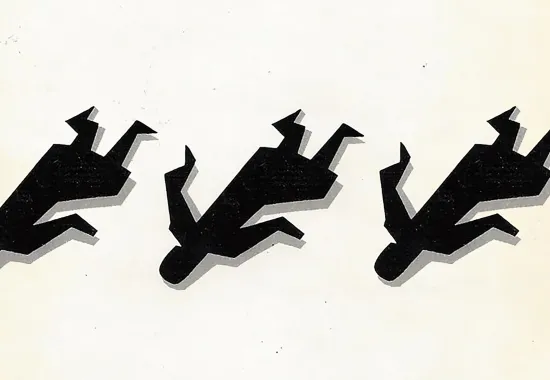On "First Kings"
“First Kings” is an expansion of my novel Crowsong for the Stricken, which I published in 2017 via my own Twelve Winters Press. I completed writing Crowsong in 2015 (I thought), but held the book’s release until two final pieces were published independently in the summer of 2017: “Erebus” in the online journal Everest and “Sheol” in Southern Humanities Review. During those two years, I looked for a commercial publisher, but absent any offers, I decided to embrace my roles as publisher and book designer to do some things with the novel that another editor/publisher would likely never allow.
For one thing I called the novel a novel. Others may see it as a “linked story collection” or a “conceptual novel.” Almost from the start I thought of Crowsong as not just a novel but a “prismatic novel,” meaning that the reader’s sense of the plot and the characters should change depending on the order in which the episodes are encountered. As such, I placed the following statement on the table of contents page:
It is the nature of books that their contents must be presented in a specific order. However, these pieces are not intended to be read as they are necessarily arranged. In fact, the intention is that the effect of each will be altered depending on the sequence chosen by the reader. To that end, page numbers are offered sparingly, if not grudgingly—perhaps something like the numbered lines of a poem. You are encouraged to read the pieces in whatever order you like.
Every fifth page is numbered, with the number appearing parenthetically and demurely at the bottom of the page. I doubt many editors or publishers would countenance this design quirk.
Another design quirk is that each episode begins with a title page in black with white letters. On the reverse of each black page the title appears in mirror image, along with the mirror image of an epigraph—except that the epigraph doesn’t appear on the all-black title page; it only appears in reverse. I have my reasons. Again, I doubt this strange feature would appeal to the typical editor.
I sent Crowsong for the Stricken into the world in hardcover, paperback, and digital editions, my fifth book of fiction, having no idea what people would make of it. Each of the twelve pieces had been published independently (some in multiple places), and the title piece had won the Editors’ Choice Reprint Award from Flyleaf Journal. But what would people think of the novel as a whole? I was delighted when Kirkus Reviews gave it a starred review, and then named Crowsong a Best Indie Book of 2017. The novel went on to win the International Book Award in Literary Fiction, as well as the American Fiction Award, from Book Fest in 2018.
Obviously I want to think that the book’s successes, modest though they be, are due to the writing, but I also believe that the design experiments helped Crowsong to stand out in the crowded field of literary fiction. More than that, the odd features complemented the novel’s aesthetic, which the Kirkus reviewer captured, I feel, when writing that it is “a work that resists easy description...recommended for those looking for something strange and beautiful.” Had I not been my own publisher and book designer, the presentation of the novel would have been much more run-of-the-mill, and, perhaps, so would have been its reception.
The attention the book received rekindled my interest in the world of the novel and its characters, and I’ve written new material since its 2017 publication, for instance, “First Kings.” Also, the long story “Vox Humana” was published by Blue Lake Review, and briars lit brought out “Weird Soliloquies.” Another Crowsong story, “The Cold Dark March to Winter,” is currently seeking a good home. As I’ve told a couple of editors, the unnamed Midwestern town in Crowsong has become my Yoknapatawpha County or my Dublin, and I can see myself adding material to the novel off and on for the rest of my days.
I’m planning to release an expanded edition of Crowsong for the Stricken, with both the original episodes as well as the new ones, in 2020 or 2021. It’s an unconventional approach—to rerelease a novel in an expanded edition rather than to publish a sequel—but its lack of convention is one of its appeals: for me at least.
Recommended
A Behind the Scenes Look at Art Selection and Cover Design for the NAR
“Doubling and the Intelligent Mistake in Georges Simenon’s Maigret’s Madwoman”
What the Birds Showed My Wounded Child, My Adaptive Adolescent, & My Wise Adult






